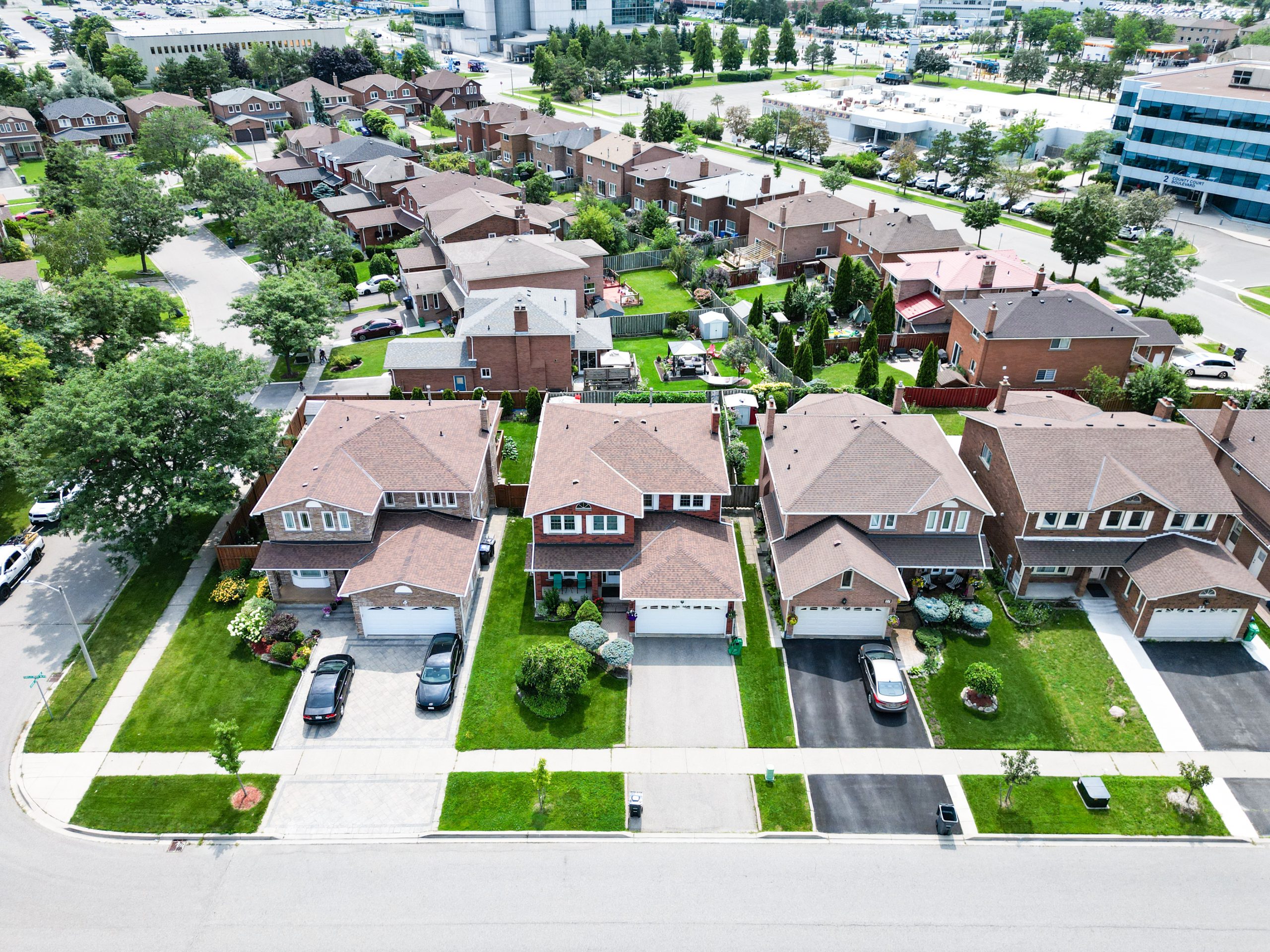Canadian Home Sales Continue to Climb in July as Market Finds Its Footing

Canada’s housing market gained further momentum in July with a fourth month of rising sales and prices holding steady. CREA’s latest numbers point to balance at the national level, while Coldwell Banker Canada underscores the importance of local expertise as regional markets move at very different speeds.
Canada’s housing market is showing signs of renewed energy. According to the Canadian Real Estate Association’s July report, national home sales rose 3.8% compared with June. That marks the fourth month in a row of stronger activity, with transactions up more than 11% since March.
The Greater Toronto Area led much of that growth, with sales rebounding more than 35% over the past four months, although activity there is still below long-term averages. CREA’s Senior Economist Shaun Cathcart noted that July’s increase marked a turning point, with the long-anticipated post-inflation recovery in housing finally beginning to take shape.
At the same time, prices have held steady. The national benchmark price was flat month over month and down 3.4% from a year earlier. The national average sale price in July was $672,784, edging slightly higher than last year. Inventory sat at 4.4 months, just below the long-term norm of five months, while new listings were unchanged. In short, the market is balanced.
Why Balance Matters
For Karim Kennedy, Chief Executive Officer of Coldwell Banker Canada, this shift is significant.
“This is what a balanced market feels like,” Kennedy explained. “Buyers are coming back with confidence, but without the frenzy that makes it hard to think clearly. People are approaching their decisions more carefully, and that is exactly when experienced agents can make the biggest difference.”
Kennedy adds that while the national numbers set the tone, the real story is local. “The market in Saskatoon is not the market in Toronto. Quebec City is not behaving like Vancouver. Local expertise has never been more important.”
Confidence Returns
Hashim Arthur, Chief Operating Officer at Coldwell Banker Canada, sees psychology playing as big a role as the statistics.
“For much of 2024, Canadians were waiting. They were waiting on interest rates, waiting on the economy, waiting to see where prices would land,” Arthur says. “Now that uncertainty has lifted a little, we are seeing that demand come back into the market. Sellers are preparing for the fall, and buyers are re-engaging.”
CREA’s Chair, Valérie Paquin, noted that September often brings a surge of new listings. With activity already strengthening through the summer, this year’s fall market could provide a clearer picture of how much demand is really back.
A Market of Contrasts
National balance does not mean uniformity. In higher-priced regions such as Toronto and Vancouver, prices remain under modest downward pressure. In more affordable areas, demand continues to drive growth. Cities like Quebec City and regions across the Prairies and Atlantic Canada are seeing competition heat up, even as Ontario’s condo markets are still working through excess supply.
Kennedy sums it up simply: “There isn’t one Canadian housing market. Every city and region tells its own story, with its own pace and pressures. Success comes from understanding the market you are actually in.”
What it Means for Buyers and Sellers
For buyers, July’s numbers point to a market where there is greater choice without the bidding wars that defined earlier years. Stable prices and steady supply mean conditions are less intimidating, particularly for first-time buyers who were previously priced out. In some regions, especially in the Prairies and Atlantic Canada, buyers will still face competition, but on the whole, this is an environment that allows for more measured decisions.
For sellers, the message is equally encouraging. After months of slower activity, demand is returning, and motivated buyers are back in the market. While pricing needs to remain realistic in higher cost areas such as Toronto or Vancouver, balanced conditions mean listings are more likely to move than they were earlier in the year. Sellers who prepare now will be well-positioned to take advantage of the traditional fall surge in activity.
Looking Ahead
As fall approaches, both buyers and sellers have opportunities. Buyers can expect more choice as new listings arrive in September, while sellers will find a pool of motivated buyers who are once again confident about making a move.
Arthur encourages preparation on both sides. “If you are planning to buy or sell this fall, don’t wait until listings appear. Work with a real estate professional now. Balanced markets don’t last forever, and being ready is an advantage.”
After a challenging stretch, confidence is returning. Sales are climbing, prices are stable, and buyers are coming back. As Cathcart put it, the long-anticipated recovery may finally be here, and the fall season will show just how durable this shift can be.
About Coldwell Banker Canada
Founded in 1906, Coldwell Banker is the most established residential real estate franchise system in North America. The brand expanded into Canada in 1989 and has since built a legacy of serving the real estate needs of Canadians from coast to coast. In 2021, Coldwell Banker Canada was acquired by Canadian entrepreneurs Steve Houle and Karim Kennedy, who are dedicated to growing the brand’s presence nationally. For more information, visit coldwellbanker.ca/franchising.
CREA June 2025 Report: National Sales Rise While Regional Markets Tell Very Different Stories

Canada’s housing market gained momentum in June with a second month of rising sales and prices stabilizing nationally. CREA’s latest figures reveal very different stories across the country, as Coldwell Banker Canada notes strong Prairie and Atlantic markets while parts of Ontario continue to lag.
In June 2025, national home sales rose for the second month in a row as more buyers returned to the market. The Canadian Real Estate Association reports that home sales recorded through MLS climbed 2.8% in June compared to May. That followed a 3.5% gain in May, marking two straight months of recovery after a sluggish spring. Compared with June 2024, sales were up 3.5%, the first year-over-year increase in many months and a clear sign that the market is moving in a healthier direction.
Highlights for June 2025 across Canada:
- Home sales rose 2.8% over May and were up 3.5% compared with last June.
- New listings fell 2.9%, which tightened supply.
- The MLS Home Price Index slipped only 0.2% from May and was down 3.7% from a year ago, the smallest decline in months.
- The average home price was $691,643 in June, down 1.3% from last year.
- Inventory stood at just over 206,000 homes, equal to 4.7 months of supply, which is about 11% more than a year ago.
CREA’s Senior Economist, Shaun Cathcart, described June as “pretty close to a carbon copy of May,” with sales up about 3% month over month and prices holding steady.
Karim Kennedy, Chief Executive Officer of Coldwell Banker Canada, says these numbers match what his teams are seeing on the ground. “This is the type of market where experience really matters. Canadians are returning to real estate with caution, and they are looking for expert local guidance. Our agents are seeing that shift every day,” he explained, emphasizing the importance of regional insight.
Regional trends tell very different stories
National statistics can hide sharp differences between regions. Ontario, particularly Southern Ontario and the Greater Toronto Area, is only slowly recovering. Sales in the GTA have increased 17.3% since April as buyers who waited through the spring begin to re-enter the market. Even with that momentum, large inventories and affordability challenges are putting light downward pressure on prices. Benchmark prices in Guelph, Niagara and London slipped between 1% and 2.5% in June compared with May. Toronto’s benchmark price fell by almost 1% in June. These are markets that saw very steep price increases during the pandemic and are now adjusting to more normal levels, creating opportunities for patient buyers.
Markets in the Prairies, Quebec and Atlantic Canada are telling a very different story. Property values in Saskatchewan, Manitoba, Quebec and much of Atlantic Canada remain resilient because supply is tighter and demand is still strong. Saskatchewan’s market is a standout performer. Home sales in the province reached 1,768 units in June, the third-highest June on record and 6% higher than a year ago. Prices there are at record levels, with the benchmark price hitting $370,700 in June, about 8% higher than last year. Regina and Saskatoon both posted benchmark price gains of between seven and 8% over the past year, while Quebec City surged by 16%. Several Atlantic Canada markets, including Halifax and Saint John, also saw double‑digit annual price gains.
“It is easy to read a national headline and think the whole country is moving in one direction,” Kennedy noted. “The truth is very different. What is happening in Saskatoon is not the same as what is happening in Toronto. That is why local expertise is so valuable.”
A balanced market heading into the second half of the year
Experts are cautiously optimistic about the second half of 2025. The Bank of Canada’s interest rate policy and broader economic trends will continue to shape the market, but the data suggests that a delayed spring rebound is now taking hold. CREA’s chair, Valérie Paquin, noted that most markets are turning a corner even though conditions still vary widely across the country.
Coldwell Banker Canada encourages buyers and sellers to take advantage of balanced conditions while leaning on experienced local agents for insights.
The overall outlook for 2025 is one of gradual recovery. Sales are improving, prices have levelled off nationally, and confidence is returning. Every market has its own story, and that is why local insight and trusted advice are more important than ever.
About Coldwell Banker Canada
Founded in 1906, Coldwell Banker is the most established residential real estate franchise system in North America. The brand expanded into Canada in 1989 and has since built a legacy of serving the real estate needs of Canadians from coast to coast. In 2021, Coldwell Banker Canada was acquired by Canadian entrepreneurs Steve Houle and Karim Kennedy, who are dedicated to growing the brand’s presence nationally. For more information, visit coldwellbanker.ca/franchising.
Coldwell Banker Canada Achieves Historic Milestone with Five Agents Named to Global 30 Under 30 List

Emerging REALTORS® from across the country are being recognized on the world stage, spotlighting a new generation of Canadian talent and a brand on a mission to bring more people home.
ST. ALBERT, AB – JUNE 19, 2025 – In a significant moment for Canadian real estate, five Coldwell Banker Canada agents have earned spots on the 2025 Coldwell Banker 30 Under 30 list, an international honour recognizing the most promising young professionals in the global Coldwell Banker® network. This marks a strong Canadian showing and underscores both individual excellence and a brand-wide shift towards empowering next-generation leaders.
Chosen from a global network of over 100,000 affiliated sales professionals across approximately 2,900 offices in 45 countries and territories, the 30 Under 30 awards celebrate innovation, service, and leadership at an early career stage. The honour also pays tribute to the brand’s founders, Colbert Coldwell and Arthur Banker, who launched the company as young entrepreneurs at just 24 and 28 years old, respectively.
Representing the best of Canada’s next generation of real estate leaders, the 2025 honourees are:
- Reimer, Brody – Coldwell Banker Signature (Saskatoon, SK)
- Butts, Hunter – Coldwell Banker Performance Realty (Amherst, NS)
- Jacyk, Stephen – Coldwell Banker Park Avenue Real Estate (Beausejour, MB)
- Sherninin, Jake – Coldwell Banker Executives Realty (Castlegar, BC)
- Round, Nathan – Coldwell Banker Northern Bestsellers (Yellowknife, NT)
“We couldn’t be prouder of these five Canadian agents and all they have accomplished,” emphasized Karim Kennedy, CEO of Coldwell Banker Canada. “They reflect everything our brand stands for: entrepreneurial spirit, strong community roots, and a genuine commitment to helping people find their way home. Their recognition on the global stage is well deserved and speaks to their leadership, hard work, and the bright future they are helping shape for real estate in Canada.”
Representing regions from Yellowknife to Amherst, this year’s honourees reflect the strength of Coldwell Banker Canada’s national presence and its growing network. Since pivoting back to Canadian ownership in 2021, the company has expanded its footprint and sharpened its focus on supporting agents through modern tools, thoughtful leadership, and a brand vision that reflects Canadian values.
“This recognition captures the energy and direction of where we’re headed,” added Kennedy. “It’s a reflection of the momentum building across our network. It’s about talent choosing Coldwell Banker Canada because we offer something different. Real support, real opportunity, and a real community.”
Coldwell Banker Canada’s legacy, built on professionalism, innovation, and a strong sense of belonging, continues to attract top talent from coast to coast. This year’s 30 Under 30 distinction underscores that the future of real estate is not only bright, it is proudly Canadian.
To view the full list of 2025 30 Under 30 winners, please click here.
About Coldwell Banker Canada
Founded in 1906, Coldwell Banker is the most established residential real estate franchise system in North America. The brand expanded into Canada in 1989 and has since built a legacy of serving the real estate needs of Canadians from coast to coast. In 2021, Coldwell Banker Canada was acquired by Canadian entrepreneurs Steve Houle and Karim Kennedy, who are dedicated to growing the brand’s presence nationally. For more information, visit coldwellbanker.ca/franchising.
Media Contact:
Amber Coyle
Fraction Collective
Coldwell Banker Peter Benninger Realty Celebrates 40 Years in Real Estate


Coldwell Banker Peter Benninger Realty Celebrates 40 Years of Excellence in Kitchener-Waterloo
2025 marks a milestone for one of Ontario’s most respected real estate brokerages: Coldwell Banker Peter Benninger Realty is celebrating 40 years of service, leadership, and community impact in the Kitchener-Waterloo region.
Founded in 1985 by visionary entrepreneur Peter Benninger, the brokerage has grown from a small local office to a full-service, multi-division team of over 100 professionals, serving residential, commercial, and relocation clients with dedication and innovation.
A Vision That Endures
Peter Benninger set out with a belief that has stood the test of time: real estate is built on trust. In 1992, the brokerage became part of the Coldwell Banker global network, bringing international resources to a business rooted in local relationships. “Access to information has changed, but the need for sound advice hasn’t,” Peter explains. “Buyers and sellers still want a trusted advisor to guide them through life’s biggest decisions.” That trusted advisor model has remained at the heart of the brokerage’s identity for four decades.
Innovation That Enhances Service
Coldwell Banker Peter Benninger Realty has consistently embraced innovation to improve the real estate experience. From adopting digital marketing early on to launching a custom-built Real Estate Consumer Centre, the brokerage has continually invested in technology, training, and tools that put clients first. Agents leverage advanced data analytics, virtual tours, and paperless workflows, ensuring that every transaction is handled with care and efficiency.
A Brokerage That Gives Back
At the core of CBPB Realty’s culture is a commitment to community involvement and social responsibility. Over the past 40 years, the brokerage has proudly supported dozens of charitable organizations and community programs, reinforcing the principle that success should benefit everyone.
These community partnerships Include:
-
- Habitat for Humanity Waterloo Region- CBPB Realty team members have participated in build days, fundraising drives, and corporate support to help provide safe, affordable housing for families in need.
- KidsAbility- By supporting therapy services and inclusion programming for children with special needs, the brokerage helps improve the lives of some of the region’s youngest and most vulnerable citizens.
- House of Friendship- From food drives to financial donations, the brokerage contributes to this vital organization that provides shelter, addiction recovery, and family support.
- The Food Bank of Waterloo Region- Annual campaigns led by agents and staff bring much-needed support to help fight food insecurity across the region.
Leading the Way in Fire Safety Education
One of the most unique and impactful initiatives led by Coldwell Banker Peter Benninger Realty has been its commitment to fire safety training. Understanding that homeownership comes with responsibilities beyond the sale, the brokerage has partnered with local fire services to educate the public and their own agents on vital home safety practices.
Highlights include:
- Fire extinguisher uses and demonstrations for agents and staff
- Fire evacuation planning tips shared with clients, especially new homeowners
- Support of local awareness events during Fire Prevention Week
This ongoing focus on safety aligns with the brokerage’s broader mission: helping clients not just buy or sell homes, but live securely and confidently in them.
A Culture of Leadership
Many of CBPB Realty’s professionals have spent the bulk of their careers here, drawn by a company culture that values integrity, collaboration, and continuous learning. In recent years, the brokerage has expanded through strategic mergers bringing even more talent under one trusted brand. Their team-first mindset, combined with a strong mentorship culture and professional development programs, continues to attract top talent from across the KW region.
Looking Ahead with Purpose
As Coldwell Banker Peter Benninger Realty enters its fifth decade, it remains laser-focused on what matters: client care, innovation, and community connection.
On behalf of Coldwell Banker Canada, we congratulate Peter Benninger and the entire team at Coldwell Banker Peter Benninger Realty, Brokerage for four outstanding decades of service and for setting the gold standard in real estate and community leadership.
Coldwell Banker Canada Appoints Hashim Arthur as Chief Operating Officer

(St. Albert, AB – May 22, 2025) – Coldwell Banker Canada is proud to announce the appointment of Hashim Arthur as Chief Operating Officer (COO). Arthur previously served as Vice President of Operations and brings over a decade of leadership and operational expertise within the Coldwell Banker network to this elevated role.
Since joining Coldwell Banker Canada, Arthur has held several key leadership positions, including Manager of Affiliate Services, where he led initiatives in technology implementation, training, and franchise engagement. A trusted resource for broker/owners and sales professionals, Arthur has been instrumental in launching platforms that have streamlined operations and enhanced Coldwell Banker’s value to its affiliates. With a background in business management and marketing, and a post-graduate specialization in advertising, Arthur’s approach to operations is rooted in strategic thinking, service excellence, and measurable results. His experience in telecommunications and real estate provides a unique perspective on customer service, change management, and innovation.
“Hashim’s journey is a testament to dedication, capability, and vision,” said Karim Kennedy, CEO of Coldwell Banker Canada. “His experience with both the day-to-day and strategic aspects of our network make him the ideal person to lead our operational strategy and deliver greater value to franchisees nationwide.” Arthur is known for his collaborative leadership style, empowering teams through mentorship, clear communication, and a strong commitment to continuous improvement.
As COO, he will lead national operations, oversee systems integration, and work closely with the executive team to support Coldwell Banker’s franchisees and agents across Canada.
About Coldwell Banker Canada Founded in 1906, Coldwell Banker is the most established residential real estate franchise system in North America. The brand expanded into Canada in 1989 and has since built a legacy of serving the real estate needs of Canadians from coast to coast. In 2021, Coldwell Banker Canada was acquired by Canadian entrepreneurs Steve Houle and Karim Kennedy, who are dedicated to growing the brand’s presence nationally.
For more information, visit coldwellbanker.ca/franchising.
Media Contact:
Dan Richards
Vice-President, Marketing
Coldwell Banker Elevate, Brokerage: A New Era in Real Estate for Halton and Wellington Ontario

(Ontario – April 4, 2025)
We are thrilled to welcome Coldwell Banker Elevate, Brokerage our newest brokerage serving the Halton and Wellington Regions and surrounding areas. Led by an experienced and driven real estate professional with nearly 20 years in the industry, this new addition to the Coldwell Banker family is set to raise the bar in real estate services.
A Passion for Growth and Excellence
After years of success at Royal LePage, the decision to open an independent brokerage was fueled by a desire to create something truly meaningful—something built on a foundation of leadership, collaboration, and client-focused service. Over the years, our new brokerage leader has built an award-winning team known for excellence, professionalism, and a commitment to raising industry standards.
Why Coldwell Banker?
Coldwell Banker Elevate chose to affiliate with Coldwell Banker Canada after receiving insightful feedback from a trusted colleague. The brand’s reputation for innovation, collaboration, and strong support aligned perfectly with the brokerage’s vision for growth and success.
“We’re thrilled to launch our business right in our own backyard, creating something amazing that others will want to be part of, and earning recognition as industry leaders.”

The Vision: Elevating Real Estate
The name Coldwell Banker Elevate represents a commitment to elevating the way real estate is done, enhancing client experiences, and supporting agents in their professional journeys. With an established team of 11 agents, including one dedicated real estate team, the brokerage is ready to make an impact.
Looking Ahead: Goals for 2025 and Beyond
Real estate is an ever-changing industry, requiring adaptability and a forward-thinking mindset. While navigating market shifts and technological advancements can be challenging, Coldwell Banker Elevate is well-positioned for success. The focus for 2025 is to attract top talent, build a collaborative culture, and become an integral part of the community—where clients turn to the brokerage for all things real estate.
Join Us for the Grand Opening!
The excitement doesn’t stop here! Coldwell Banker Elevate will host a grand opening in late May, when the weather is just right for a proper celebration. Stay tuned for more details as we welcome the community, clients, and industry professionals to this exciting new chapter.
Welcome to Coldwell Banker Elevate, Brokerage—where we’re taking real estate to the next level!
About Coldwell Banker Canada: Founded in 1906, the Coldwell Banker brand is the most established residential real estate franchise system in North America. Fast forward over 100 years and the Coldwell Banker network is one of the most trusted in the world, with a global presence across over 40 countries and territories worldwide. The Coldwell Banker brand made its way to Canada in 1989 and has since gained a legacy of serving the real estate needs of Canadians from coast to coast for over 30 years. Since being acquired in 2021 by Canadian entrepreneurs Steve Houle and Karim Kennedy, the company strives to grow the brand’s presence on a national level. Coldwell Banker Canada is ready to make their mark in the Canadian Real Estate Market and transform the industry along the way.
For further information about Coldwell Banker Elevate, Brokerage, please contact:
Lisa Hartsink
Coldwell Banker Elevate, Owner/Broker of Record
Direct: (905) 877 – 2630
Email: lisa@lisahartsink.com
For information about Franchising with Coldwell Banker Canada, please contact:
Paul Abbott
Coldwell Banker Canada
Direct: (905) 630-1095
Email: paul.abbott@coldwellbanker.ca
Bank of Canada New 0.5 Rate Cut

On Wednesday, the Bank of Canada announced a second consecutive interest rate cut of 50 basis points, bringing the central bank’s policy rate down to 3.25 per cent. While the move was widely anticipated by economists and markets, it signals a shift towards a more cautious pace of easing amid growing economic uncertainty. Let’s explore what this decision means for Canada’s housing market and what experts predict for the months ahead.
Rate Cuts and Their Impact on Borrowing
The Bank of Canada’s recent cuts—five in total since June—have taken the policy rate from restrictive territory to a more neutral range. This shift is designed to balance the economy, stimulating growth without significantly driving inflation. According to Bank of Canada Governor Tiff Macklem, past rate reductions are already beginning to lift household spending.
For Canadian borrowers, this is welcome news. Fixed mortgage rates, currently above four per cent, are expected to stabilise, while variable rates are likely to fall below five per cent. As Penelope Graham from Ratehub.ca notes, this will provide relief for mortgage borrowers, especially those with variable-rate loans, as their payments decrease or more of their payment goes toward principal rather than interest.

Real Estate Market Activity
Real estate experts anticipate that the lower rates will lead to heightened housing market activity, even during the traditionally slower winter months. Buyers are becoming increasingly active, with a noticeable uptick in demand following the initial rate cuts earlier in the year.
Experts predict an early start to the spring housing market, possibly as soon as late January or February. “Buyers have woken up to the reality that property prices are rising again, and more will feel an urgency to act before affordability erodes,” say market analysts.
Victor Tran from RATESDOTCA advises prospective buyers to secure pre-approvals now in preparation for an expected market shift in early 2025, where conditions may start to favour sellers once again.
Mortgage Trends and Opportunities
Lower borrowing costs are not only a boon for homebuyers but also for investors. As Alana Riley of IG Wealth Management explains, reduced rates create favourable conditions for real estate investments, potentially boosting property values in major urban markets. Meanwhile, homeowners with upcoming mortgage renewals or unsecured loans can look forward to some relief in their monthly cash flow.
What’s Next for the Bank of Canada?
Governor Macklem has signalled that while further rate reductions are being considered, the pace of cuts is likely to slow. With inflation back at two per cent and the economy showing signs of strain, the central bank’s focus will shift to a more gradual approach to monetary policy.
For Canadians planning to enter the housing market, the next few months present a unique window of opportunity. Whether you’re looking to buy your first home, upgrade to a larger property, or invest in real estate, this period of lower rates could be the right time to act.
Take the Next Step with Coldwell Banker Canada
Your dream home is within reach. Contact a Coldwell Banker Canada agent today to learn how we can guide you through the process of buying, selling, or investing in real estate. With the best experts in the market, we ensure a smooth and stress-free experience every step of the way. Visit coldwellbanker.ca/directory to get started. Let’s make your real estate dreams a reality!
Coldwell Banker Momentum Realty Expands into Norfolk County, ON, with the Addition of Action Plus Realty to Its Network

(St. Catharines, Ontario – November 28, 2024)
Coldwell Banker Momentum Realty is excited to announce its growth with the addition of Action Plus Realty to its network. This move adds three new offices into the Momentum Realty network, enhancing its presence in Simcoe and surrounding areas. With this expansion, Coldwell Banker Momentum Realty now operates 8 offices, supported by a team of 90 dedicated real estate professionals.

“The expansion of our brokerage into these three exciting markets offers our REALTORS® a unique opportunity to service our clients needs across Southern Ontario. ” said Stephen Oliver, Owner of Coldwell Banker Momentum Realty. ‘We look forward to immersing ourselves in these communities and growing the Momentum brand while helping our agents succeed for years to come.”
This acquisition strengthens Coldwell Banker Momentum Realty’s ability to connect buyers and sellers across an expanded market, creating opportunities for agents and clients alike.

Karim Kennedy, CEO Coldwell Banker Canada
Karim Kennedy, CEO of Coldwell Banker Canada, expressed excitement about the collaboration: “With this alignment, we’ve strengthened our presence in Southern Ontario and Momentum Realty’s proven track record will lead to new opportunities for growth in the Niagara Region and Norfolk County.”
About Coldwell Banker Momentum Realty
Coldwell Banker Momentum Realty is a premier real estate brokerage operating across the Regional Municipality of Niagara and Norfolk County in Southern Ontario, known for its client-focused approach and commitment to innovation. With 8 offices and 90 agents, the company offers a full suite of real estate services backed by the trusted Coldwell Banker brand. Momentum Realty’s mission is to create seamless, personalized experiences for clients while fostering a supportive and forward-thinking environment for its agents.
About Coldwell Banker Canada: Founded in 1906, the Coldwell Banker brand is the most established residential real estate franchise system in North America. Over 100 years later and the Coldwell Banker network is one of the most trusted in the world, with a global presence across over 40 countries and territories worldwide. The Coldwell Banker came to Canada in 1989 and has since gained a legacy of serving the real estate needs of Canadians from coast to coast. Since being acquired in 2021 by Canadian entrepreneurs Steve Houle and Karim Kennedy, the company strives to grow the brand’s presence on a national level. Coldwell Banker Canada is ready to make their mark in the Canadian Real Estate Market and transform the industry along the way.
For further information about Coldwell Banker Momentum Realty, contact:
Stephen Oliver, Broker of Record/Owner
Coldwell Banker Momentum Realty
(905) 328-3786
Welcome Coldwell Banker Executives Realty: A New Era in BC Real Estate

(Vernon, British Columbia – September 23, 2024)
We are thrilled to announce the newest addition to the Coldwell Banker family—Coldwell Banker Executives Realty, led by veteran real estate professional Bill Hubbard. With over 35 years of experience in the real estate industry, Bill brings a wealth of knowledge, innovation, and passion to the Coldwell Banker brand, setting the stage for a new chapter in the interior of British Columbia.
A Legacy of Excellence
Bill Hubbard’s journey in real estate began in Millwoods, Edmonton, Alberta, and has been marked by consistent achievements and recognition. After moving to British Columbia with Century 21 in 1996, Bill quickly made his mark, winning the prestigious Franchisee of the Year award for all of Canada in 2015. His offices consistently ranked in the Chairman’s Circle, placing them among the top 30 in the country, and were awarded the Grand Centurion status—the highest production award in the Century 21 system.
Beyond these accolades, Bill’s commitment to community is evident in his efforts to support Easter Seals Send a Kid to Summer Camp, one of Canada’s top fundraisers. His dedication to philanthropy aligns perfectly with Coldwell Banker’s values, and we look forward to collaborating on future charitable initiatives.

Bill Hubbard, Broker of Record
Adapting to a Changing Industry
In 2018, Bill recognized the seismic shifts occurring in the real estate industry. The traditional bricks-and-mortar office model was losing relevance as REALTORS® began taking control of their marketing and advertising, often through third-party contractors offering more efficient and cost-effective solutions. Understanding these changes, Bill made the bold decision to pivot his business model, creating a hybrid that balanced the best of both traditional and modern approaches.
This strategic shift paid off, with his team growing from 55 REALTORS® in 2018 to 160 in 2024. The COVID-19 pandemic further accelerated the adoption of this new model, enabling the business to thrive in an increasingly digital world.

Coldwell Banker Executives Realty Office, Vernon, BC
A New Partnership with Coldwell Banker
The final piece of the puzzle was finding a brand that resonated with Bill’s vision. After careful consideration, Coldwell Banker stood out as the ideal partner. Known for its advanced technology, progressive approach, and strong presence in the Canadian market, Coldwell Banker met and exceeded all of Bill’s expectations.
With the launch of Coldwell Banker Executives Realty, Bill is poised to lead his team to even greater heights. His goal is to establish a dominant position in the eight market areas his offices serve across the interior of BC.
Looking Ahead
As we welcome Coldwell Banker Executives Realty into our network, we are excited about the future. Bill Hubbard’s innovative spirit and deep industry expertise are invaluable assets to our brand. Together, we will continue to push the boundaries of what’s possible in real estate, delivering unparalleled service and value to our clients and communities.
Please join us in celebrating this exciting new chapter!
About Coldwell Banker Canada: Founded in 1906, the Coldwell Banker brand is the most established residential real estate franchise system in North America. Over 100 years later and the Coldwell Banker network is one of the most trusted in the world, with a global presence across over 40 countries and territories worldwide. The Coldwell Banker came to Canada in 1989 and has since gained a legacy of serving the real estate needs of Canadians from coast to coast. Since being acquired in 2021 by Canadian entrepreneurs Steve Houle and Karim Kennedy, the company strives to grow the brand’s presence on a national level. Coldwell Banker Canada is ready to make their mark in the Canadian Real Estate Market and transform the industry along the way.
For further information about Coldwell Banker Executives Realty, contact:
Bill Hubbard
Coldwell Banker Executives Realty, Broker of Record
(250) 550-4221
Low-Cost Ways to Boost Fall Curb Appeal

This article was reposted from Blue Matter by Michel Smith, Article Here
Ah, the power of an inviting outdoor facade! If you’re selling your home, it’s important to set the right tone outside so shoppers know to expect a fantastic interior. But it’s also just fun to enjoy the warm fall fuzzies when pulling in your own driveway. Here are some fall curb appeal ideas that are easy to pull off – and best yet, won’t break the bank.
Visit the Pumpkin Patch
Head to the nearest pumpkin patch and choose your favourites! You can flank your doorway with a few or get creative arranging clusters of pumpkins and gourds in various shapes, sizes, and colours. You can dress up the display and add height by mixing in hay bales, crates, or decorative baskets. For more bursts of fall colour, you can also add gourds to other landscape areas such as gateways and gardens.
Plant Autumn Flowers
Mums, pansies. and asters are excellent choices for fall. They can be planted in the front areas of plant beds for instant fall interest. You can also display them in pots or window boxes to add vibrant touches. While technically not flowers, other striking options include ornamental kale and cabbage.
Add Hardy Grasses
Along with annual plants, fall is a great time to incorporate switchgrass, fountain grass, or blue fescue into your landscaping. These additions introduce texture and movement to your garden and can withstand cooler temperatures.
Highlight the Front Door
With cooler temperatures, fall is an ideal time to give your front door a fresh coat of paint. Choose a bold colour to make a statement. Create a warm welcome by hanging a seasonal wreath made of natural materials like berries and twigs, along with touches of autumn foliage. You can also swap out your summer doormat for one with a fall theme or greeting.
Illuminate Your Landscape
Fall brings shorter daylight hours, so why not brighten up your landscape and highlight your home’s best features. Guests will appreciate the glowing welcome! Use spotlights to accentuate specific areas, such as driveways or large trees. Solar stakes are a good way to illuminate a walkway and come in a variety of styles and price ranges. As a bonus: Landscape lighting enhances security.
Welcome fall with open arms and enjoy the year’s most colourful season. Try one or all of these affordable ways to make the most of autumn and showcase your home.


 Facebook
Facebook
 X
X
 Pinterest
Pinterest
 Copy Link
Copy Link
